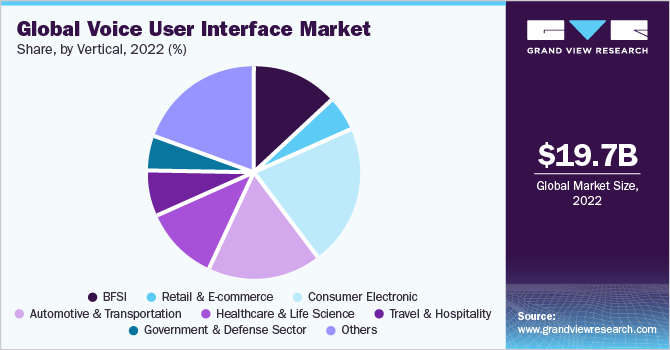How VUIs and Conversational Design Are Changing User Experience
Find out how voice assistants like Siri and Alexa work! This article explains Voice User Interfaces (VUIs) and conversational design, showing you how to make voice interactions simple and natural for users.

If you’re like most people, you've probably used voice assistants like Siri, Alexa, or Google Assistant without even thinking twice. But have you ever wondered what makes these devices understand what you're saying?
Well, it’s Voice User Interfaces (VUIs) and conversational design. These technologies are behind the smooth, voice-based interactions we’re getting so used to.
In this article, we’ll break it all down: what VUIs and conversational design are, why they matter, and how you can use them in your own products.
What Are Voice User Interfaces (VUIs)?
At its core, a Voice User Interface (VUI) is a system that lets you interact with a device or software through spoken commands. No more tapping on screens or swiping through apps—now, all you need to do is speak, and the system responds.
VUIs are behind the technology that powers popular voice assistants like:
- Siri on iPhones
- Google Assistant on Android devices
- Amazon Alexa in smart homes
In simple terms, VUIs are what make devices “listen” and respond to what you say, making our interactions with technology feel more human.
Why are VUIs important?
- 8.4 billion voice assistants are expected to be in use worldwide. (Source: Yaguara).
- The global VUI market was valued at USD 19.73 billion in 2022 and is expected to grow at a CAGR of 21.3% from 2023 to 2030 (Source: Grand View Research).

This shift shows how voice technology is not just a trend, but a fundamental part of the future of digital interaction and business operations.
What Is Conversational Design?
While VUIs handle the technical side of voice interactions, conversational design is what makes those interactions feel natural and intuitive. It’s about designing the dialogue between a user and the system, ensuring that the conversation flows smoothly and feels, well, human.
For example, when you ask Siri, “What’s the weather like today?” you expect a response that’s clear and to the point. The system needs to understand your intent, interpret it correctly, and provide useful information without sounding robotic. That’s the essence of conversational design.
Why Conversational Design Matters
Good conversational design isn’t just about making voice interactions work—it’s about making them pleasant, helpful, and intuitive. It also brings these benefits:
- Improved customer satisfaction: Users expect clear, helpful responses. If your VUI can give them what they need with minimal hassle, they're more likely to keep using it.
- Increased engagement: The more natural and enjoyable the conversation, the more users will interact with your product.
- Better accessibility: For people with disabilities, VUIs and conversational design open up new ways to interact with technology.
Why You Should Implement it in Your Product

Integrating Voice User Interfaces (VUIs) and conversational design into your product isn't just a trend—it's a strategic move that can significantly enhance user experience and drive business growth. Here's how:
1. Enhances User Experience
Voice interactions make apps and devices more accessible, especially for individuals with disabilities or those who prefer hands-free operation. A study published in the journal Information highlights that VUIs offer unique benefits like mobile and hands-free engagement, which are increasingly replacing traditional text-based interfaces. (source: MDPI)
2. Boosts Customer Satisfaction
Users appreciate devices that understand and respond promptly to their commands. Implementing conversational design can lead to more intuitive and satisfying interactions. For instance, companies that have adopted conversational design have reported a 7% to 25% increase in annual sales. (source: Zoovu)
3. Drives Business Growth
The global VUI market was valued at USD 19.73 billion in 2022 and is projected to grow at a compound annual growth rate (CAGR) of 21.3% from 2023 to 2030. (source: Grand View Research)
This rapid growth underscores the increasing demand for voice-enabled technologies and the potential for businesses to capitalize on this trend.
In summary, adopting VUIs and conversational design can lead to improved user experiences, higher customer satisfaction, and significant business growth. As the market for voice-enabled technologies continues to expand, integrating these features into your product is a strategic move that can provide a competitive edge.
Steps to Implement VUIs in Your Product:
- Research User Needs – Find out who your users are, where they will use the VUI, and what they want to do with it. Automation can help find patterns in how users act, so you can design the system to match how they will use it.
- Define Use Cases – Decide what tasks people will use the VUI for, like turning on lights or shopping. This makes sure the VUI solves real problems people have and makes it easier to use in everyday life.
- Create Simple, Natural Conversations – Make the voice interaction easy and clear. Keep things short and simple so users can quickly get the information or action they need without getting confused.
- Prototype and Test – Use tools like Dialogflow, Rasa, or Voiceflow to build a sample version and test it out. By testing early and often, you can get feedback to fix any issues and make sure it works well.
- Integrate with Backend Systems – Connect your VUI with things like apps, websites, or payment systems. This helps the VUI do more complex things like making transactions or controlling devices, giving users more control and convenience.
- Refine and Improve – Keep improving the system based on feedback. Look at how users interact and make changes to make the experience better, keeping up with their needs and new technology.
For more detailed guidelines and design principles, refer to these useful resources:
These resources provide additional insights into crafting intuitive and effective VUI systems.
Real-Life Applications

We come across VUIs and conversational design every day in various products and services. Here are some of the most well-known examples of how these technologies are being used to improve user experience and drive innovation.
Amazon Alexa: The Smart Home Revolution
Amazon’s Alexa has been a game-changer in the world of smart homes. With just a voice command, users can control lights, thermostats, and even order products from Amazon. Alexa’s conversational design is what makes it easy to interact with—whether you’re asking to play a song or adjusting your home’s temperature.
Google Assistant: Your Personal Assistant
Google Assistant goes beyond voice commands to make your life easier. Whether it’s setting reminders, sending messages, or answering questions, Google’s conversational design ensures that the assistant understands follow-up queries without having to repeat information. For instance, you can ask, “What’s the weather in New York?” and then follow up with, “What about Chicago?” without having to restate the location.
Healthcare: Voice Assistants for Patients
Healthcare is another area where VUI and conversational design are making a huge impact. Many healthcare providers are now using voice assistants to help patients manage medication, book appointments, and get health updates. One study found that voice-activated medication reminders led to a 30% improvement in medication adherence.
The Future of VUI and Conversational Design
The future of voice technology is incredibly promising. As AI continues to evolve, we'll likely see even smarter VUIs that understand not just the words but the context behind them, improving overall user interface interactions. This means even more sophisticated voice interactions, like multilingual support, emotional tone recognition, and deeper personalization.
Expect voice assistants to expand across industries, including healthcare, retail, automotive, and more. Over the next 5-10 years, we’ll likely see AI-driven voice systems playing an even bigger role in our daily lives.
Final Thoughts
Voice User Interfaces and conversational design are no longer just "nice-to-have" features—they’re becoming essential in today’s tech landscape. These technologies not only improve user experience but also drive business results by making products more engaging, accessible, and easier to use.
Whether you’re working on a voice assistant for your business, a smart home device, or just exploring voice technology, VUIs and conversational design are the future. And with a little effort, you can start making your products feel more intuitive, human, and—most importantly—effective.

